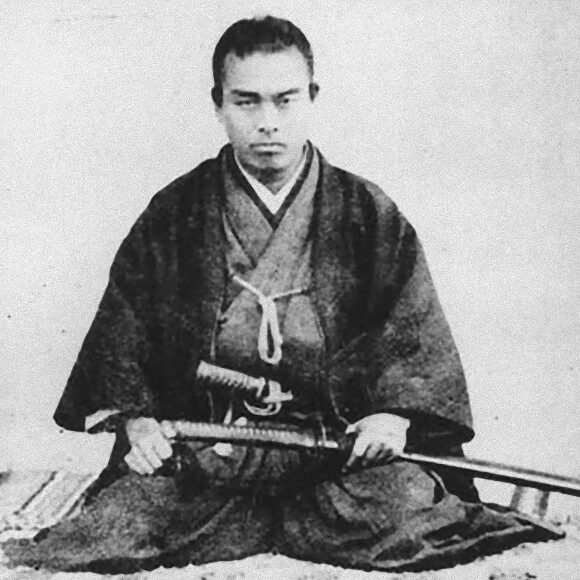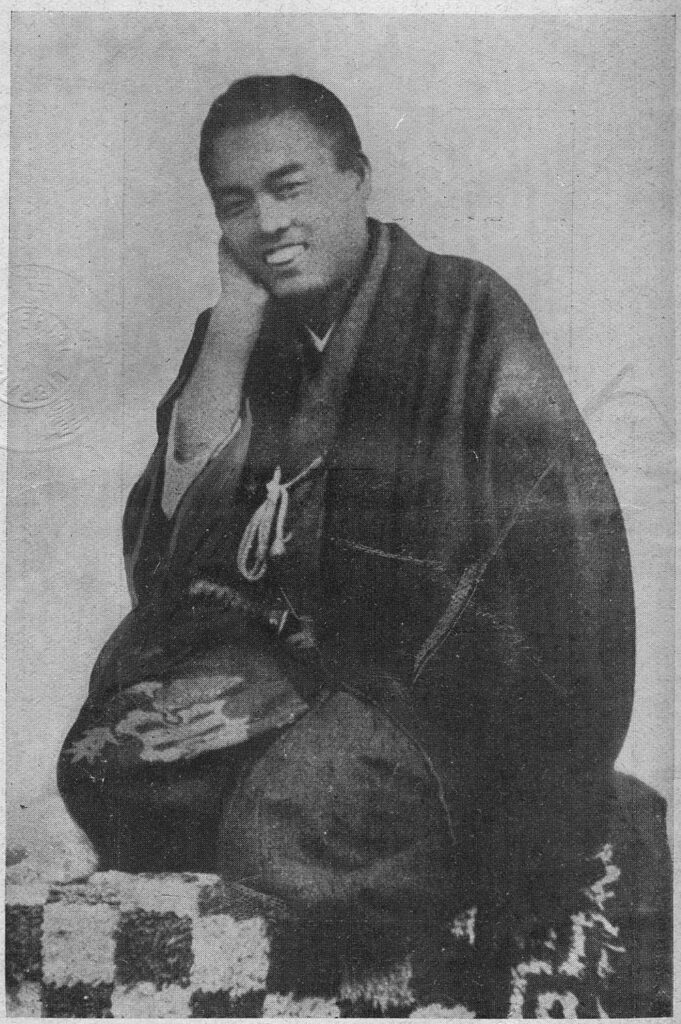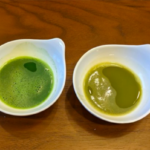

May 6, 1838 ~ Dec 12, 1867 (age 30)
中岡慎太郎 Shintaro, Nakaoka
The Life of a Man Devoted to the Future of Japan, and His Unfortunate Death Before He Saw the Meiji Era
From Village Politics to Domain Politics to Japanese Politics
Shintaro Nakaoka was born in 1838 as the eldest son of a family in Tosa (present-day Kochi Prefecture). He was born to a father who was a village headman. As a successor, he received an education from the age of three, including learning to read and write, and devoted himself to improving the lives of the villagers. He learned swordsmanship from Takechi Zuizan. In 1857, he married and in 1861 joined the Tosa Loyalist Party, which had been formed by Takechi with the goal of being dedicated to the principles of sonnō jōi (revere the emperor, expel the barbarians), and became an activist.
What is Sonnō jōi?
Sonnō jōi: Revere the emperor, expel the barbarians *
The appearance of the “black ships” off the coast of Uraga in 1853 shocked the Japanese people of that time as Japan was a closed country (national isolation). Japanese people who did not know much about foreign countries were frightened, and the “expel the barbarians” movement was born out of a desire to keep them out of Japan. The movement spread throughout Japan, partly because the emperor of the time, Koumei, was a xenophobe. However, the Shogunate’s Ii Naosuke, who had witnessed the mighty military power of Perry, decided that Japan would never be able to compete with them by force of arms and decided to open a country to the outside world. Dissatisfaction with the Shogunate for ignoring the emperor’s wishes and concluding unfavorable treaties led to the Sonnō jōi movement.
However, even those who initially believed in expelling the barbarians changed their minds when they realized the difference in power between Japan and foreign countries. This includes Nakaoka who then started actively introducing new knowledge and technology from overseas to modernize the Japanese military system.
In particular, the Satsuma and Choshu clans, both of which had been prominent exponents of the principle of “expelling the barbarians,” were easily defeated in battles against foreign nations, reminding many people that “expelling the barbarians” is impossible.
*The “revere the emperor” and ” expel the barbarians” requires a distinction. “Revere the emperor” was a common Japanese spirit and a matter of course. The Shogunate was in the position of acting as a political agent with the permission of the emperor, and the Shogun and retainers (the samurai), also considered the emperor to be the person they should respect the most.
The Shogunate couldn’t compare to the indomitable foreign pressure, so the Satsuma and Choshu clans decided to stop seeking to expel the barbarians and change their line to revere the emperor and overthrow the Shogunate to create a political system centered on the emperor. Soon after, the two clans formed the “Satcho Alliance,” which accelerated the movement for it. Thus whether expelling the barbarians or overthrowing the Shogunate, it was assumed that the emperor would be the central figure in the process.
Defection From the Clan for the Sake of National Politics And Activities to Revere the Emperor
When the Tosa Domain, to which Nakaoka belonged, began to receive suppression of the activities of the revere the emperor, expel the barbarians, he promptly abandoned the domain and defected to the Choshu Domain, claiming that he could not change Japan if he remained in Tosa. He then organized the ex-clan patriot in the Choshu domain, helped Sanjo Sanetomi, a court noble who had fled to Choshu, and acted as a liaison with other ex-clan patriots in other parts of Japan.
One of his greatest achievements is that he and Ryoma Sakamoto brought the Satsuma Clan and the Choshu Clan, which were said to fight like cats and dogs, to an understanding and successfully concluded an alliance. Ryoma’s passionate speeches and strategies were the key to this success, but Nakaoka was also active as a liaison for the abandoned clan patriots, so he must have been the one who coordinated their will. The “Satcho Alliance,” which was made possible because of these two men, played a major role in the overthrow of the Shogunate and the Meiji Restoration.

The purpose of the Satcho Alliance was to overthrow the Shogunate. The Choshu Clan was seen by the Shogunate and the Emperor as a traitor and an enemy and was not even allowed to purchase weapons, weakening their power. The Satsuma Clan was protected by the Shogunate, but they were waiting for a chance to overthrow the Shogunate because they did not see a bright future ahead if they continued to listen to the Shogunate. The Satsuma Clan bought weapons and secretly gave them to the Choshu Clan, which convinced the two clans to take the initiative in overthrowing the Shogunate.
Ryoma and Nakaoka had the same goal to overthrow the Shogunate. However, the idea of the way to achieve that goal was different between Ryoma and Nakaoka. Ryoma preferred using intelligence and tried to advance things through dialogue but Nakaoka developed his thoughts into using force of arms.
His Death
The end of Nakaoka Shintaro’s life was coming as the power of the Edo Shogunate was about to be crushed. Nakaoka was visiting Ryoma in Kyoto.
While they were together, some visitors came to see Ryoma. Escorts, who did not think it strange, let those visitors go up to the room on the second floor where Nakaoka and Ryoma were, and the visitors attacked them.
In a split second, Nakaoka and Ryoma did not even have time to pick up their own swords and were quickly attacked and defeated by five assassins. Ryoma died instantly in conditions that caused his brain to pop out. Nakaoka was also slashed in the limbs and survived for two days in serious condition, but then he died. He was 30 years old. Just about 20 days after this, the Meiji Era began.
The Meiji Restoration was brought about by the presence of Nakaoka and Ryoma, but both of them passed away without seeing the new era. The graves of Shintaro Nakaoka on the right and Ryoma Sakamoto on the left are side by side.
.
.
.




